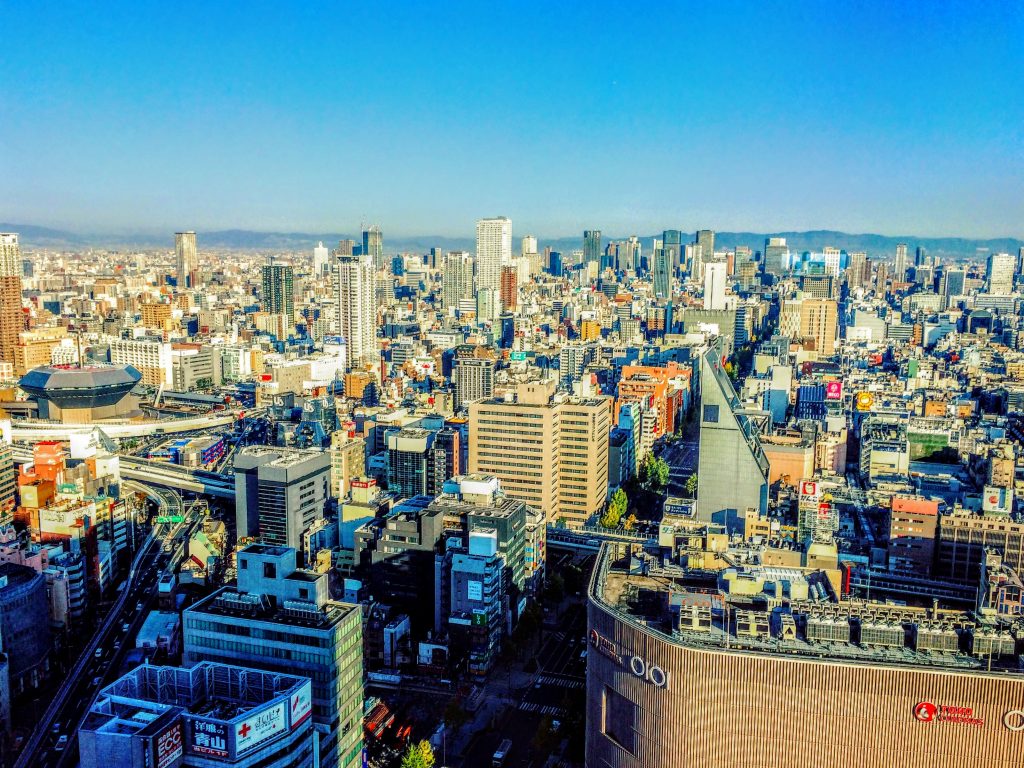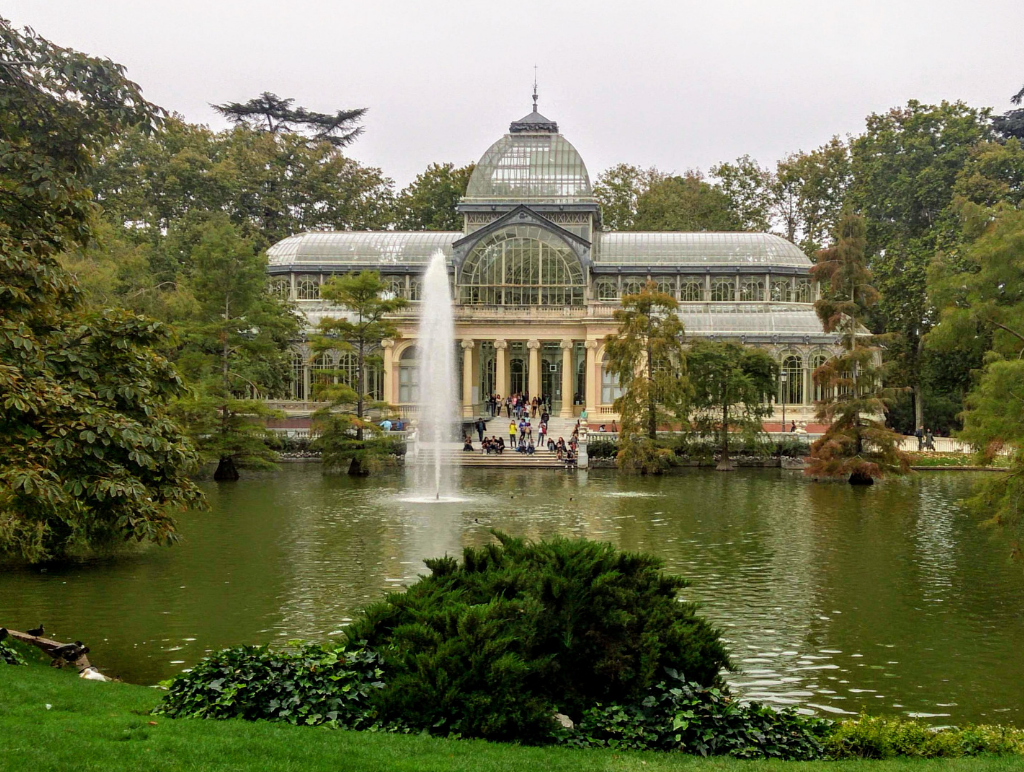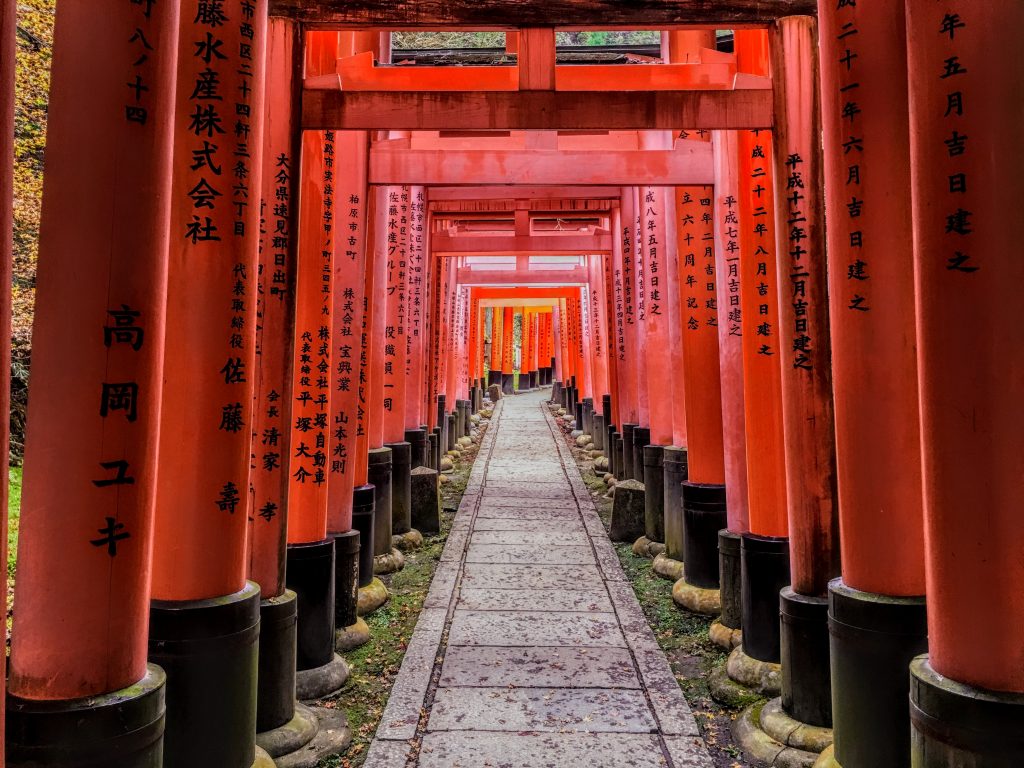
Kyoto has an endless choice of things to do. If you’re visiting for the first time and want to do the absolute highlights of the city, this journal is for you. I’ve collaborated with bloggers that have also traveled to the city to get you a different perspective. We included tips on how to escape the crowds and make the most of your time.
Here’re Our Recommendations For Things To Do in Kyoto on your First Time Visit
Hike the Fushimi Inari Taisha Temple Path
This is probably one of the most popular Shinto shrines in Kyoto. A must visit for every first-time visitor. There’s something about it, special energy you feel while walking through the thousands of torii or gates. They are 100% donated from businesses around Japan looking for luck for their business.
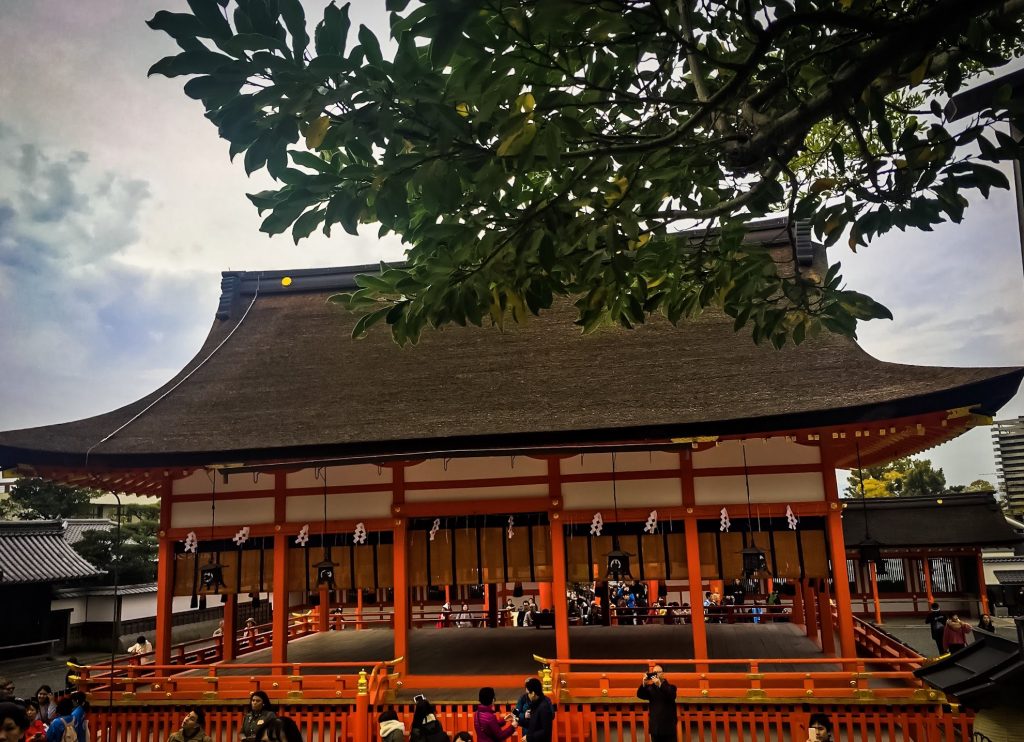
Fushimi Inari is the most important of several thousands of shrines dedicated to Inari, the Shinto god of rice. Foxes are thought to be Inari’s messengers, resulting in many fox statues across the shrine grounds. Fushimi Inari Shrine has ancient origins, predating the capital’s move to Kyoto in 794. (1)
When we approached the entrance there were already so many people. Especially in the main shrine. But as we moved to the side shrines, it was almost empty and you could escape the madness for some moments.
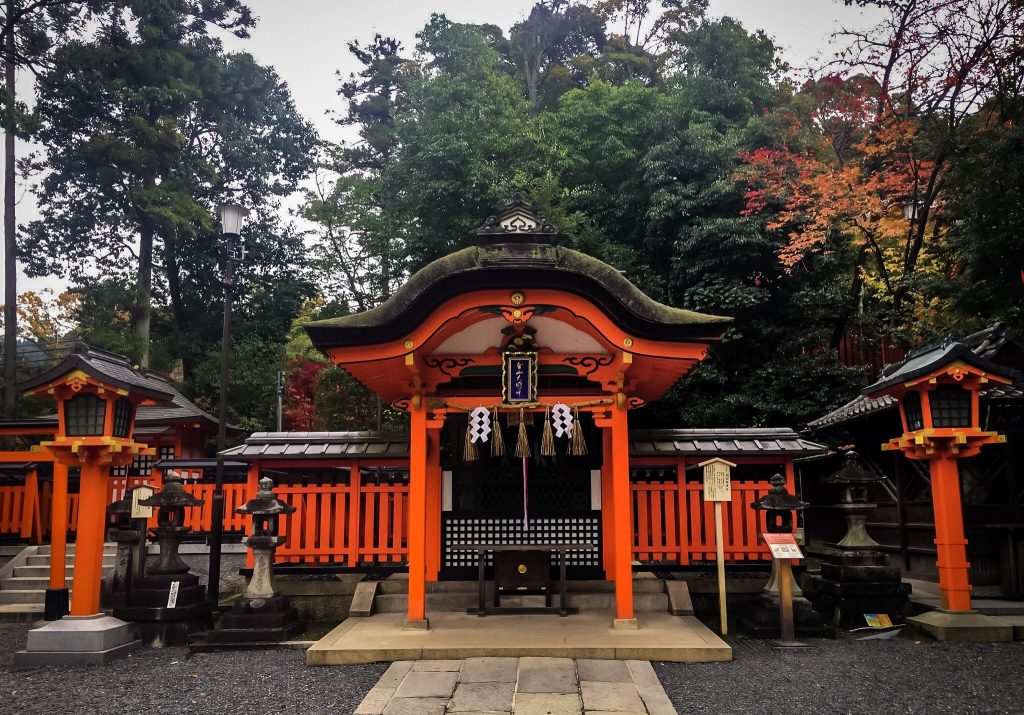
Truth to be told when we entered the path of torii, I began to feel disappointment. There were so many people. You could only see heads. But we couldn’t go back so we continued on. The more we walked the more the crowds were thinning out. We felt calmer and more observing of our environment. There were old people picnicking on the grass, cute tea houses, small traditional restaurants.

Until you reach a viewpoint of Kyoto the path is the most crowded. This is where the real journey begins, where you’ll find lonely torii, moss paths, traditional cemeteries, small local souvenir shops. This is where you’ll have the path to yourself. Where you’ll be able to get the real feel of the shrine and its mind purifying powers.
I think this is the impact a shrine connected so deeply to nature has on oneself. We continued to the sacred Mount Inari, 233m high, then we walked back down on the circular path.
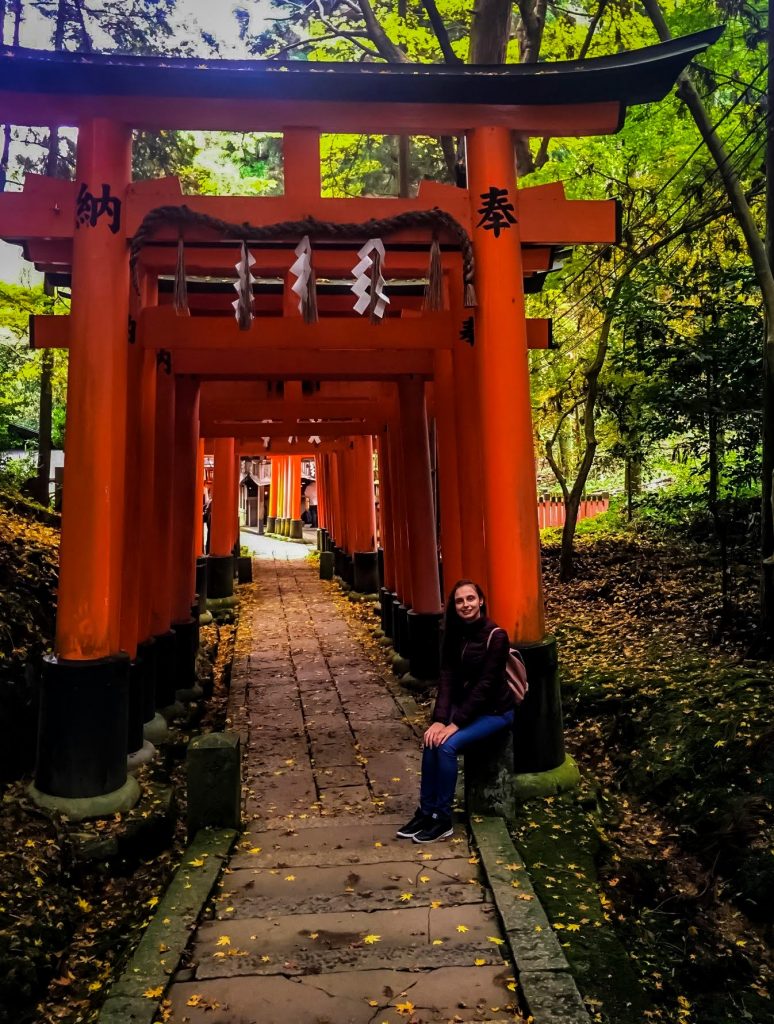
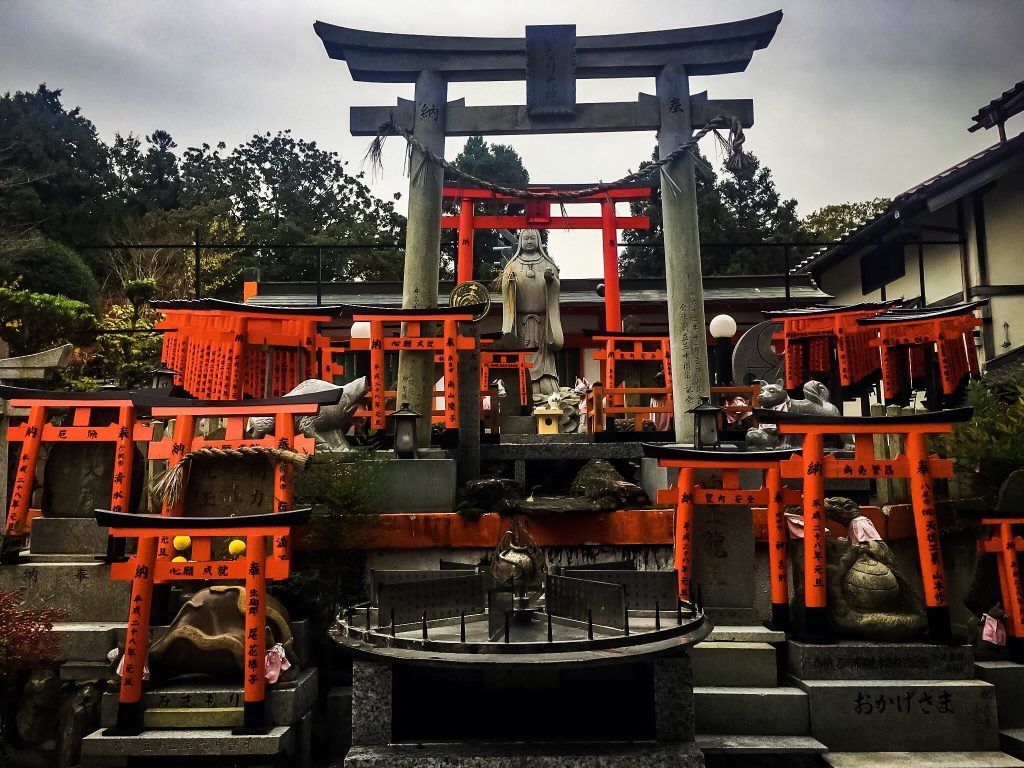

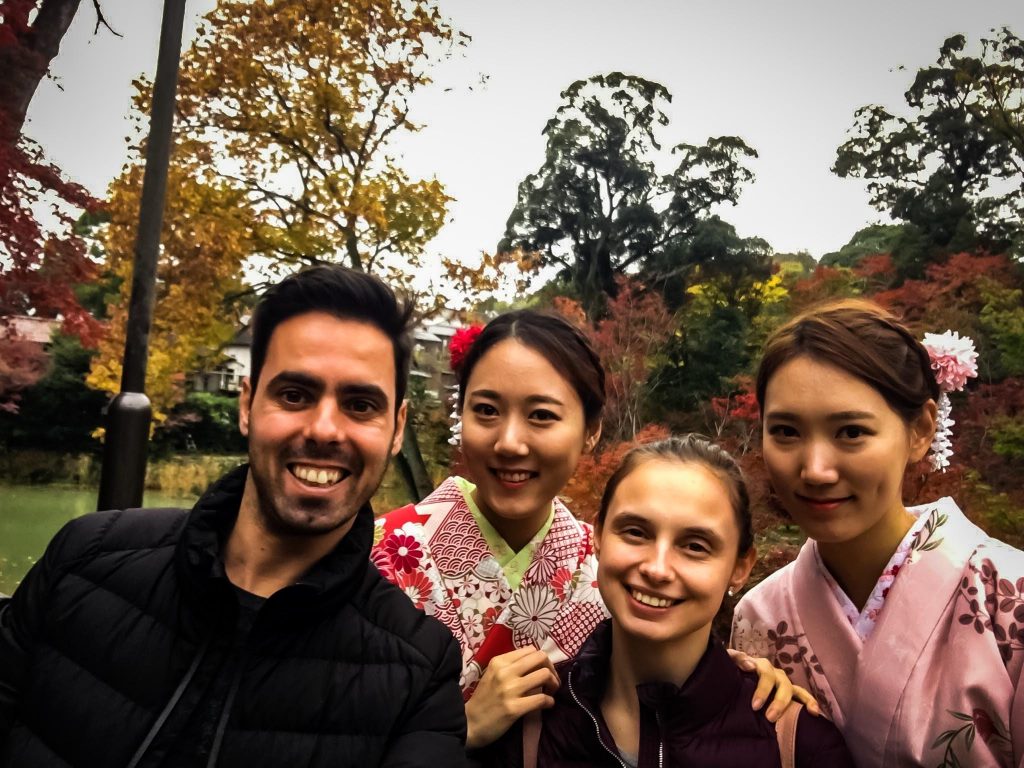
Eat local delicacies at the Fushimi Inari Taisha Street food market
We spent half a day at the Fushimi Inari Taisha and when we reached the end of the path we were very hungry. Luckily there was an enormous street food market just some streets down the shrine. There were so many things to choose from. We ended up eating classic yakitori – charcoal grilled skewered chicken, a salty crepe and a pancake filled with sweet bean paste.
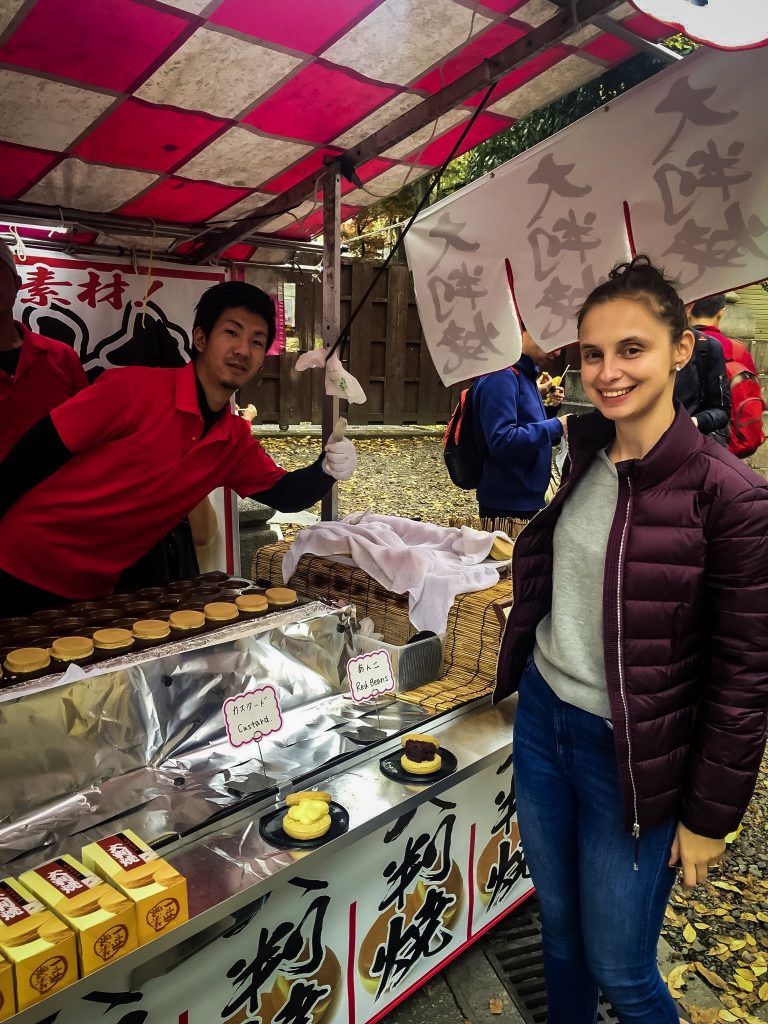
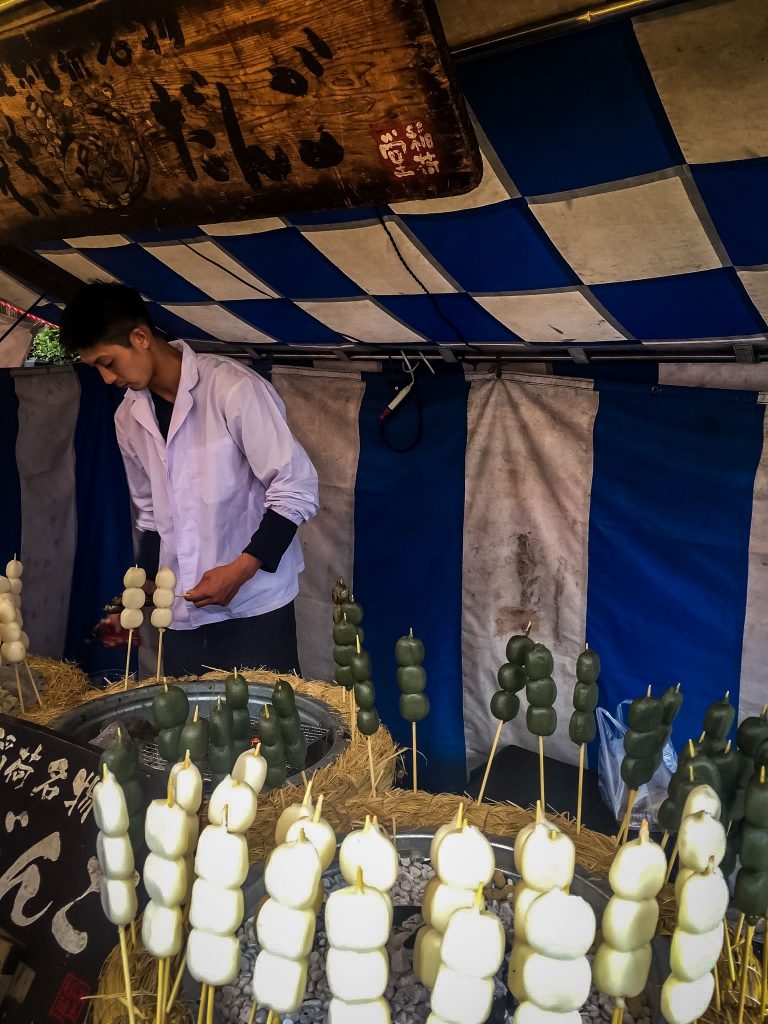
The most special meal was the salty crepe. It was so delicious. We first bought one to share, but we just had to get another one. The taste did remind me a bit of the Osakan Okonomiyaki though. But the representation was very different. Finishing with a sweet is rare in Japan so we took the chance. The pancake with anki or sweet red bean paste was very tasty, too.
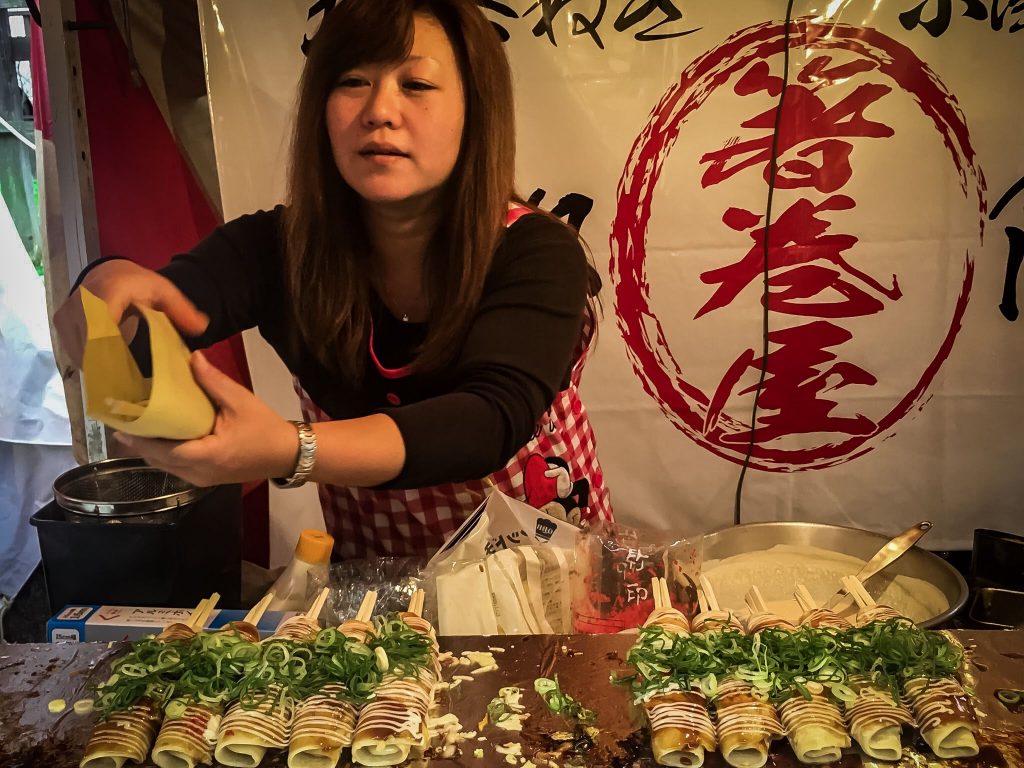
A street food market is a great place for people watching, too. There were so many Japanese, Chinese and Koreans dressed in colorful Yukatas and Kimonos. Visiting this shrine and Kyoto is very special to them and they make sure to show it.
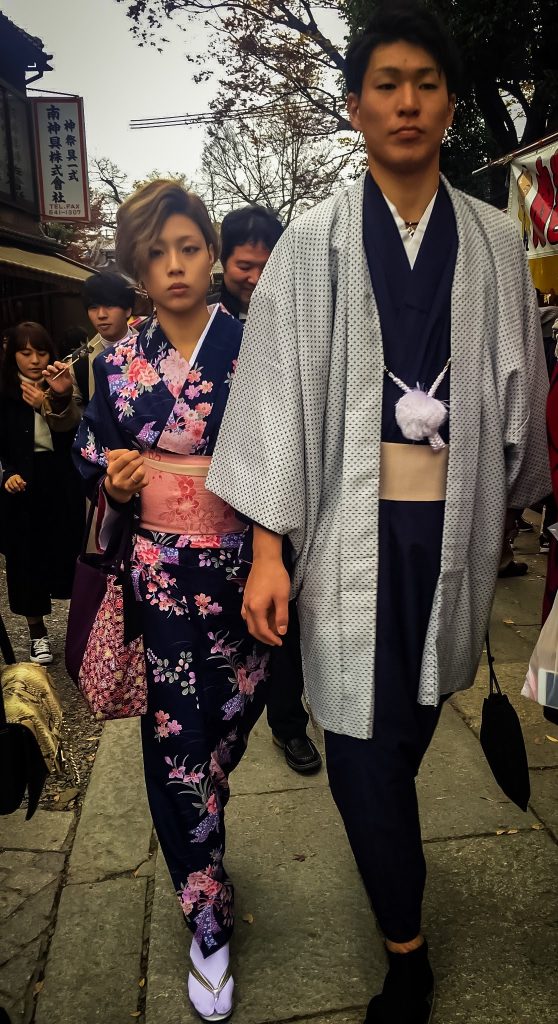
Hire a Kimono
That’s why hiring a Kimono or Yukata is a great way to appreciate the importance of the places visited. There’s a specific way to dress a Kimono and you need to go to a specialized shop.
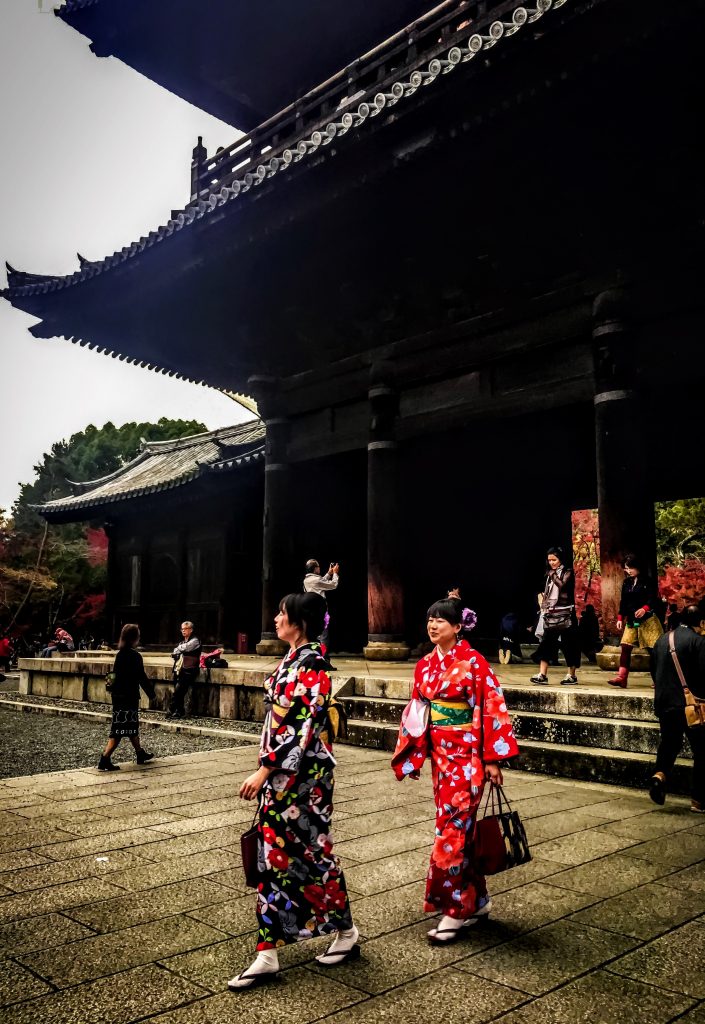
We just opted for a studio shoot as we didn’t want to walk all day in kimonos (it was cold). We loved the colorful experience.
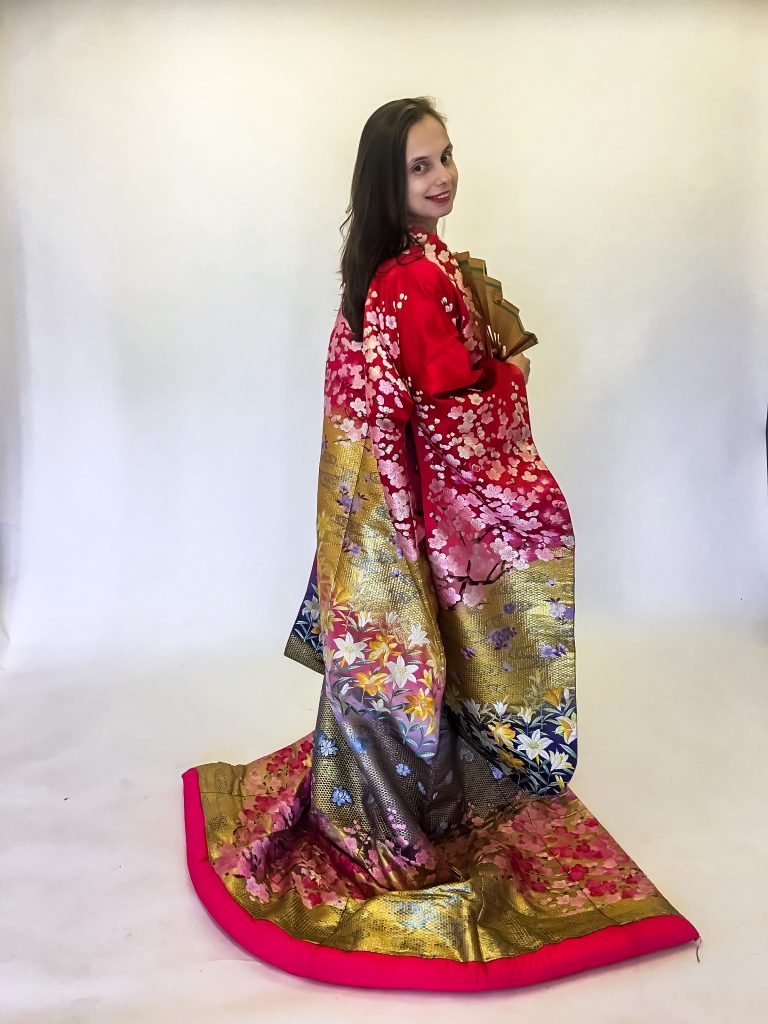
Visit the Nanzen Ji temple
Nanzen Ji is the highlight Zen temple of Northern Higashiyama. There’s the main temple and there are other smaller temples on the sides. The further you away from the entrance and the main temple, the less the crowds.
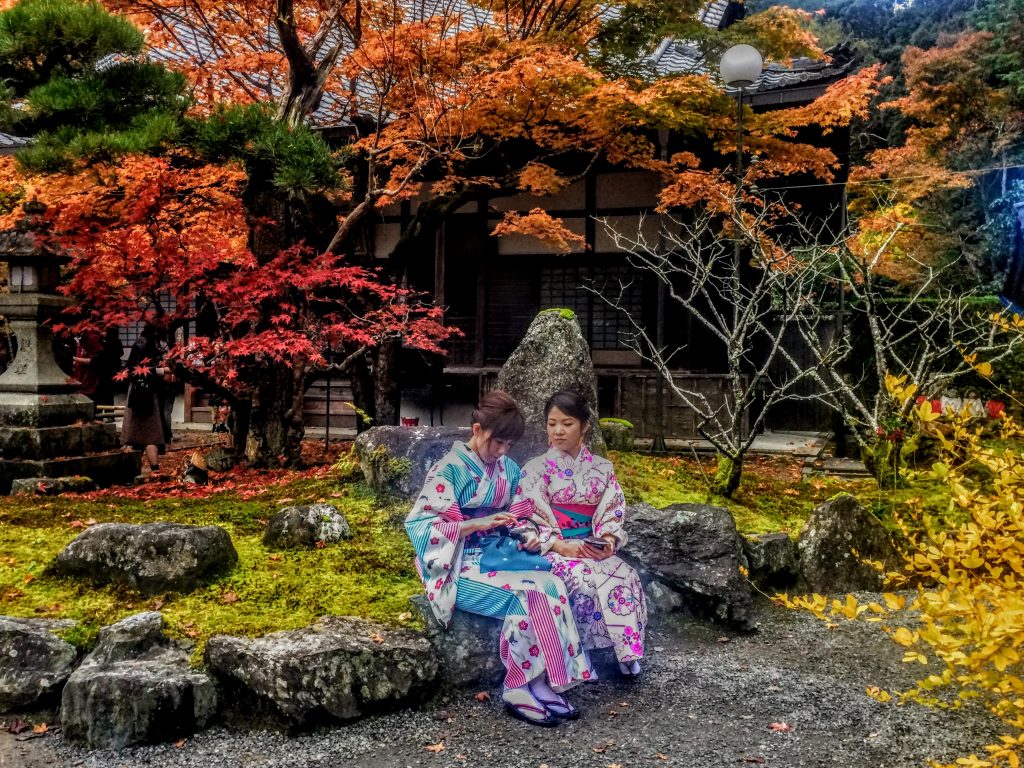
There’s also a bamboo grove. One of the most unusual places to visit in the temple is the Nanzen Oku-no-in, a secret waterfall grotto about 200 meters up in the hills behind the temple. To get there, walk under the brick aqueduct and take a hard left and follow the little stream. You’ll soon get to a flight of steps that leads up to Oku-no-in. Look above the waterfall and you’ll find a small grotto hidden in a giant boulder that contains several mysterious Buddhist images. (2)
Note: don’t expect a big waterfall unless it’s the rainy season.
Appreciate Autumn colors in the Tenju-an Temple
Tenju-an is a sub-temple of Nanzen Ji. It’s a great place if you want to escape the crowds for a while. There’s a small entrance fee, but I believe it’s worth it especially in Fall when you can observe the magic of the Autumn foliage. You’ll find a beautiful pond around which there’s a carefully landscaped zen garden.
You’ll be surrounded by the romantic red, yellow and green color everywhere. Just follow the stepstones path to discover the pretty corners of the garden. And be patient to wait, sometimes small groups can obstruct the way, but they leave soon because they’re on a busy schedule.
When we entered the temple we saw many Asian wearing kimonos and taking pictures, I must say they looked amazing. I think next time I’ll do the same and take pictures in the hidden corners of the Tenju-an temple.
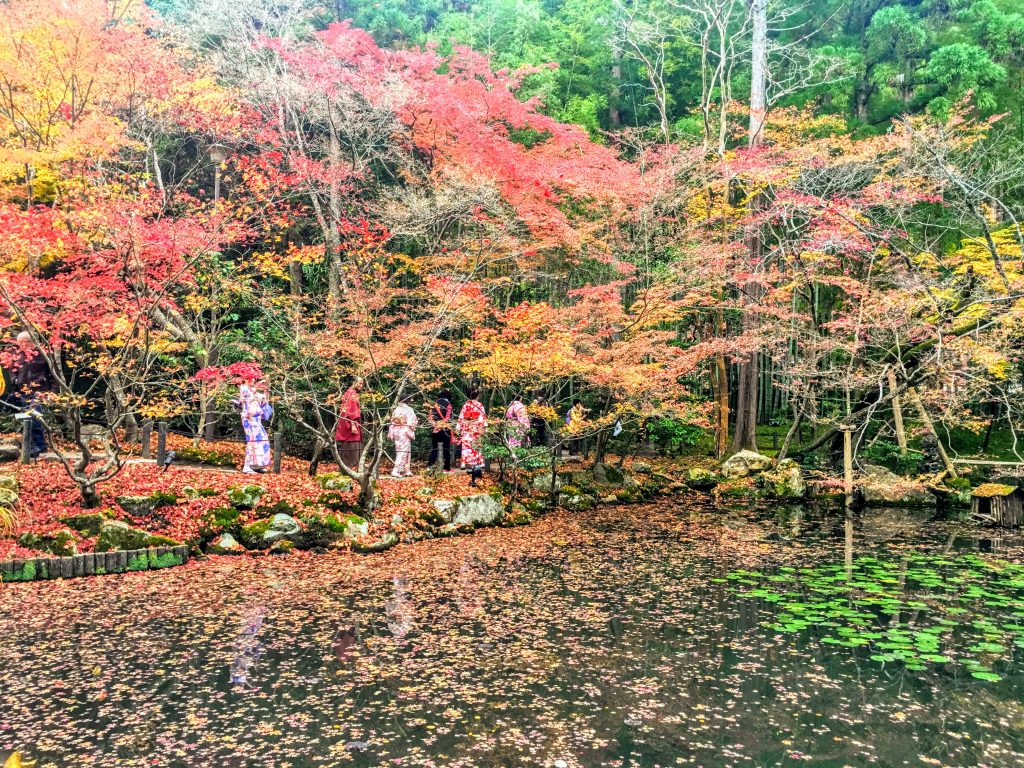
In addition, during the fall season, there are evening light ups from 17:30~21:00. The light ups create a different and charming atmosphere compared to day viewing of the leaves… During the night you can enter the main temple that is normally closed during the day. (3)
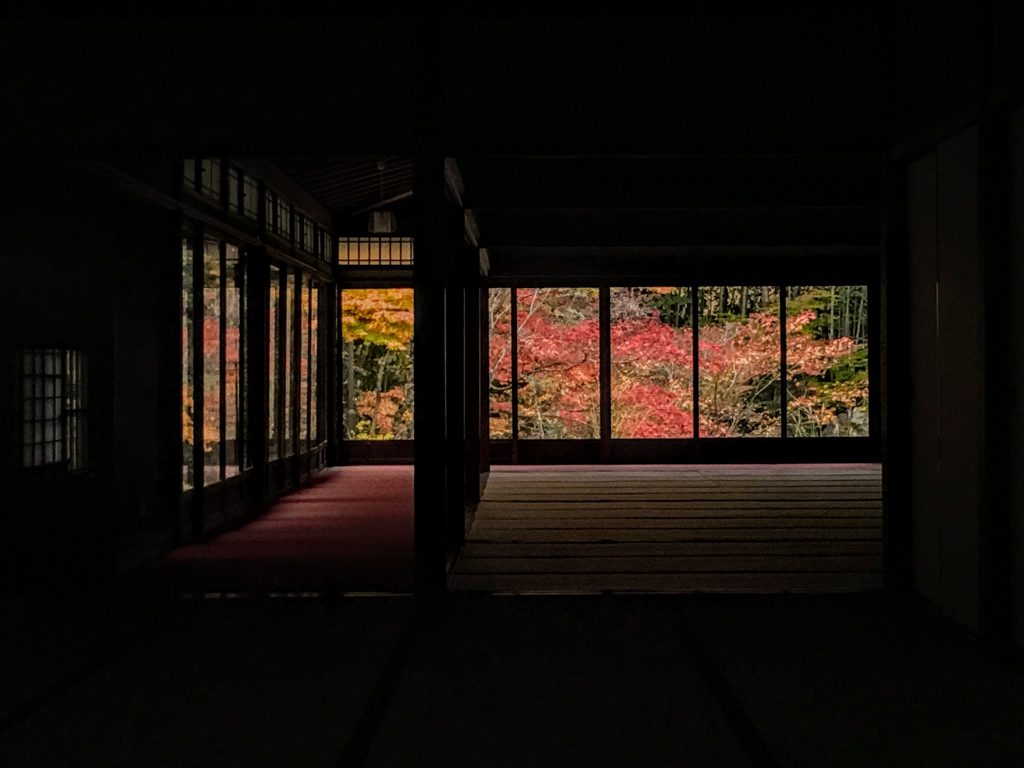
Walk the Philosopher’s path
The Philosopher’s path is the natural continuation of the Nanzen Ji Temple.
If you visit late in the afternoon you’ll find tranquility and quietness. At least in the low season and even during the autumn foliage, it’s out of the tourist routes. You’ll find yourself walking next to the canal of Lake Biva. The pretty aqueduct in Nazen Ji is part of the canal that continues for 20km until the mountains.
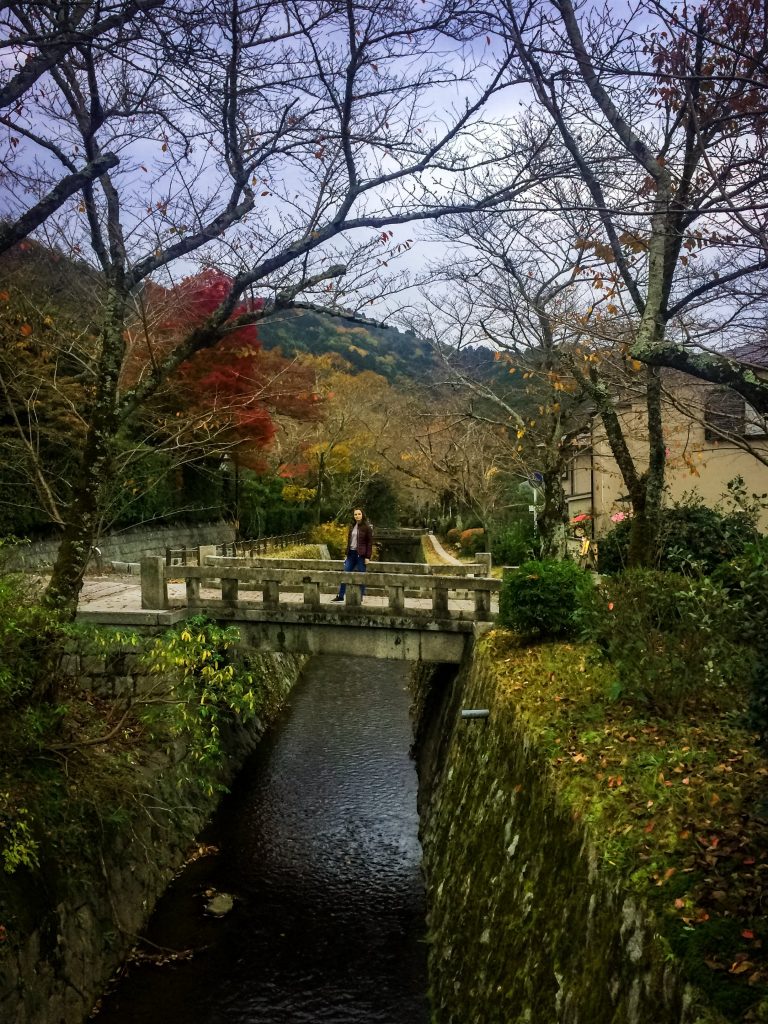
In Spring when the cherry blossom viewing is happening, you’ll find many more people as it’s one of the main sights for visiting.
During your walk, you’ll find local shops, restaurants, and smaller temples. Continue to the very of the 2km long Philosopher’s path end and you’ll find the
Go to the Silver Pavillion
Stepping into the sublime grounds of Ginkaku-ji, is like stepping into a different world. Ginkaku-ji, or more often called the Silver Pavilion, has all the features that one would expect from an ancient temple in Kyoto – gorgeous gardens, unique traditional architecture and a rich history. It is one of Kyoto’s most famous sights. And rightly so, earning its mark as the second most important temple, after the Golden Pavilion, in this historic city.
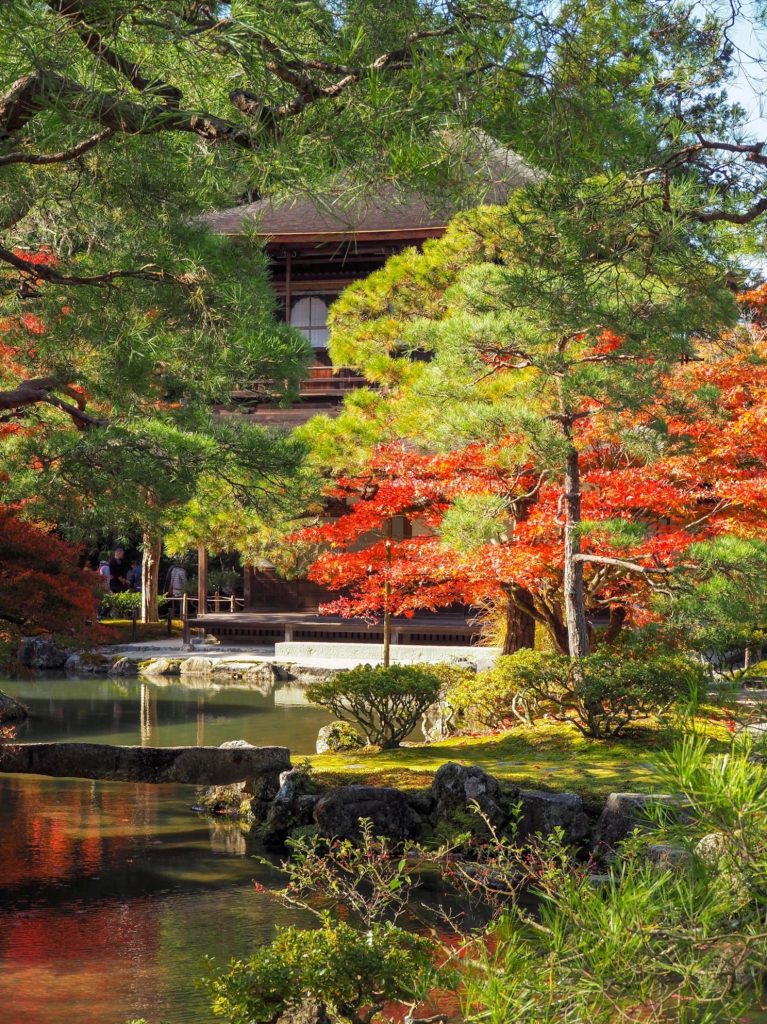
Unlike the Golden Pavilion, the Silver Pavilion is actually not covered in silver foil as it’s name suggests. In fact, it is believed that the name originated from the reflection of water on the black lacquer, which created a silver shimmer.
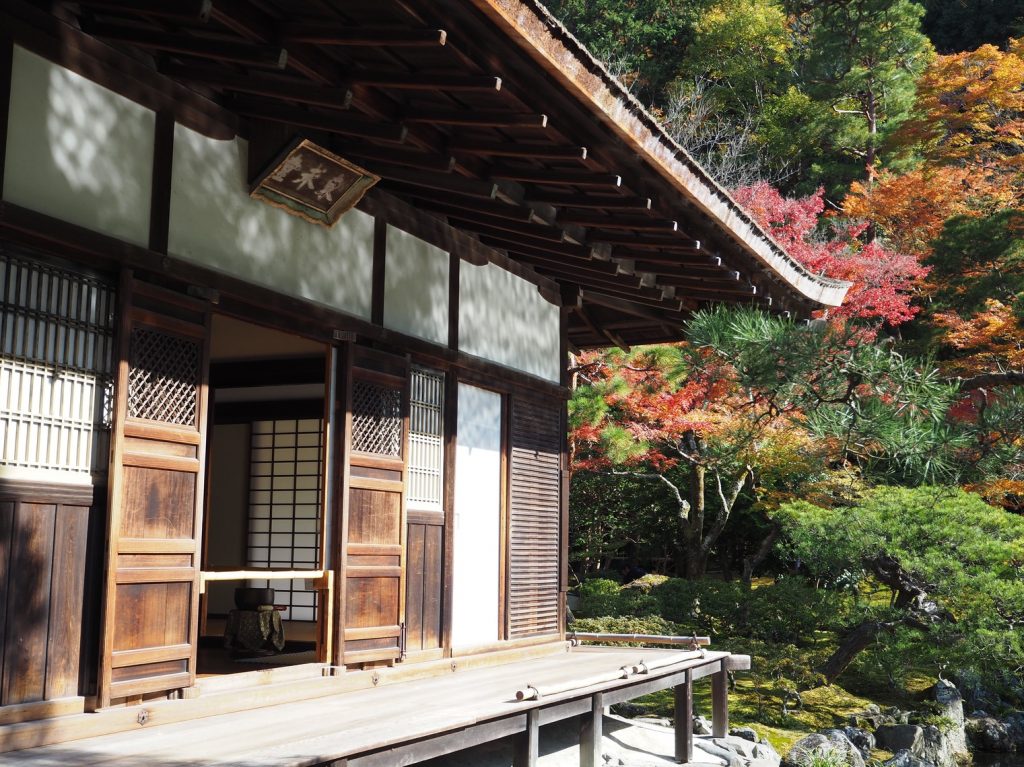
Start your journey admiring the amazing zen garden right as you enter the grounds. Then follow the circular trail around the grounds where you will be greeted by beautiful moss gardens, waterfalls, towering bamboo stalks and gorgeous flora around every turn.
There’s also a great lookout point at the top of the trail where you can get a spectacular birds-eye view of the city. And, let’s not forget the main temple structure, Kannon-den. Even though Kannon-den is not open to the public, it remains one of the most impressive structures in all of Kyoto, especially during fall in Japan.
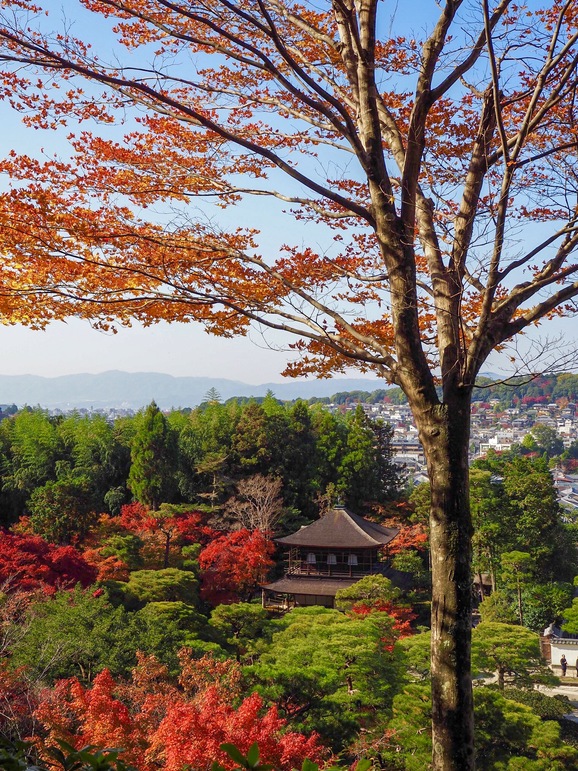
Ginkaku-ji is extremely popular among locals and tourist alike. So, it’s best to time your visit to the early morning hours. The temple is open between 9-5pm and the entrance fee is ¥500. Grab one of the tourist buses at Kyoto Station to get here.
Visit the Golden Pavilion on a sunny day
This glittering temple was brought from a family in 1397 and transformed into the temple complex. Kinkaku-ji Pavilion was burnt down in 1950, by a 22-year-old novice monk. The structure you see today was built in 1955, with the gold paint being refurbished in 1987.
This three-story pavilion stands at 12.5 meters tall and is one of the sites of Kyoto you shouldn’t leave without seeing. Visiting on a sunny day provides a much more golden reflection on the nearby pond, although a cloudy day is still a beautiful attraction.
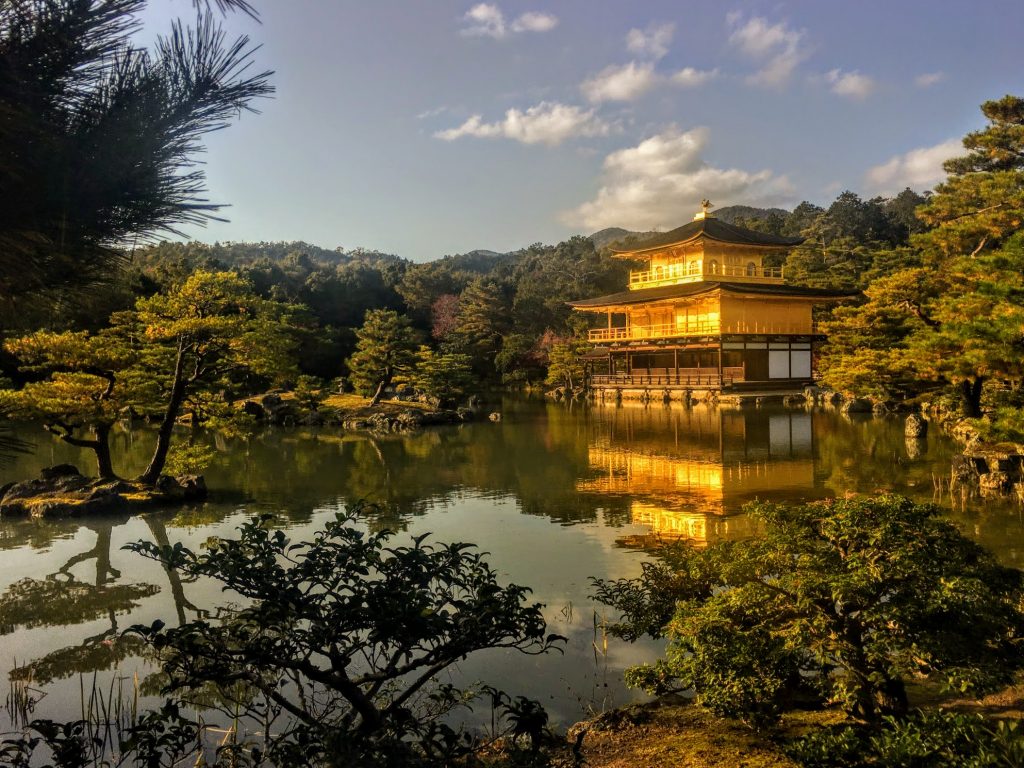
Cat petting
Japanese people and visitors alike love cats. You’ll find cats on the streets and on shrine paths. They often make a big Instagram attraction, especially for Asian tourists. What I loved the most is that the Japanese made a shelter for them with warm blankets and cat food only, human food was strictly forbidden. How lovely.
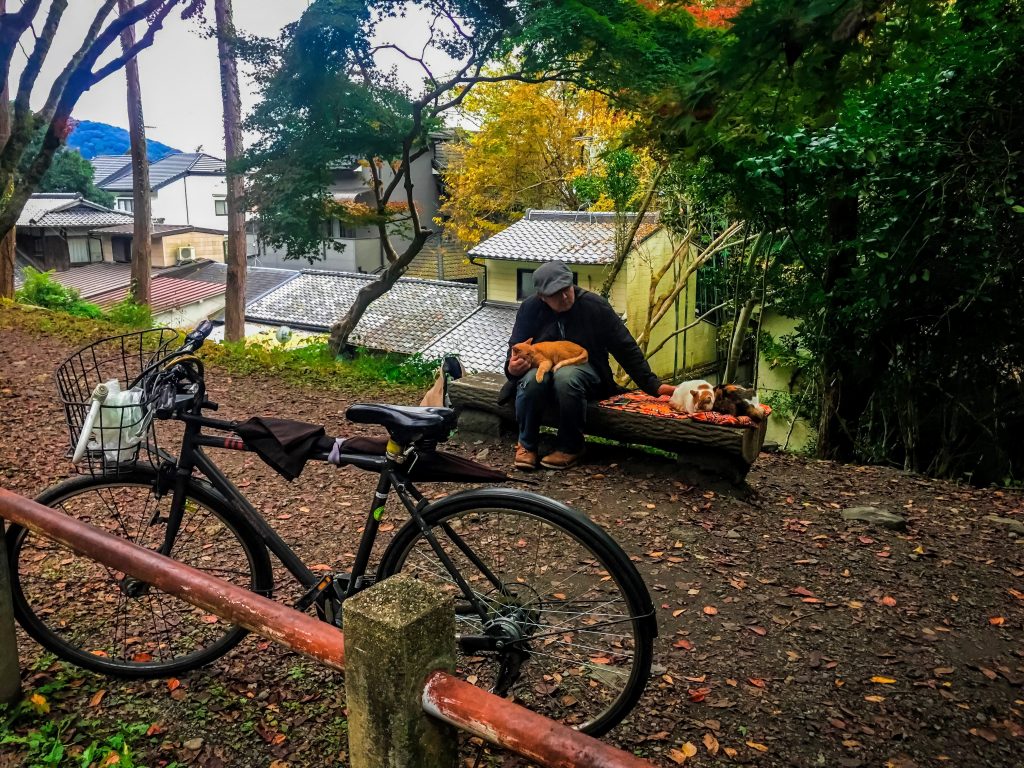
Participate in a Tea ceremony
If you’re crazy about tea or if you want to experience some peace and quiet while in Kyoto, you need to participate in a tea ceremony. For me, it was an amazing private experience, getting to know the old traditional ways of making and serving matcha tea. Like almost everything in Japan it looks simple at first but once you begin following the instructions it’s not that easy.
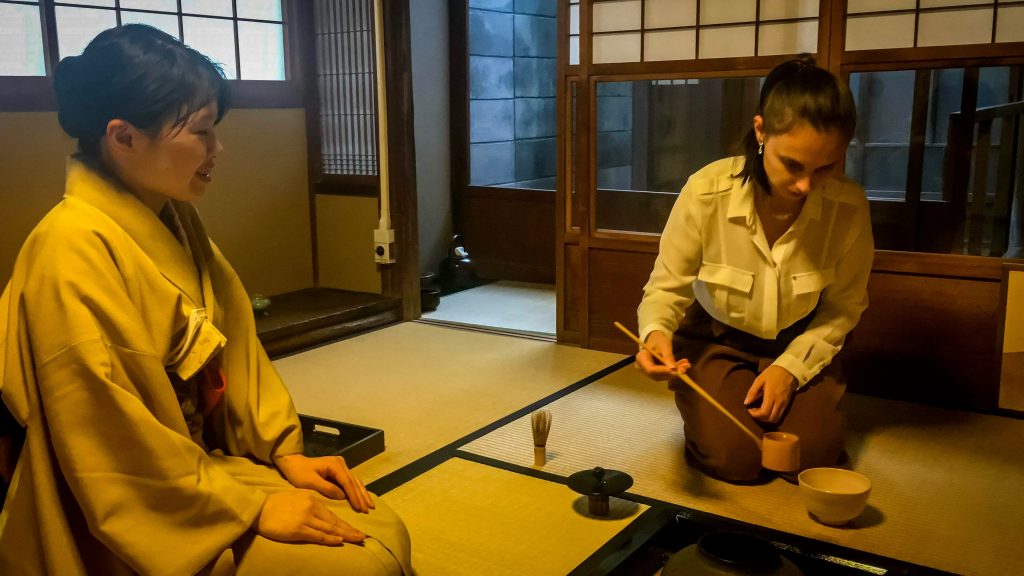
You can only achieve simplicity by long hours of training or attending a special school as our sensei did. She taught us the right way to perform a tea ceremony and I have to yet do one at home. You need to know the correct temperature of the water, how to pour it in the cup and how to properly dissolve the matcha powder in it. Sitting and serving etiquette is taught, too. And the traditional Japanese room helped us relax our minds after a day full of exploring.
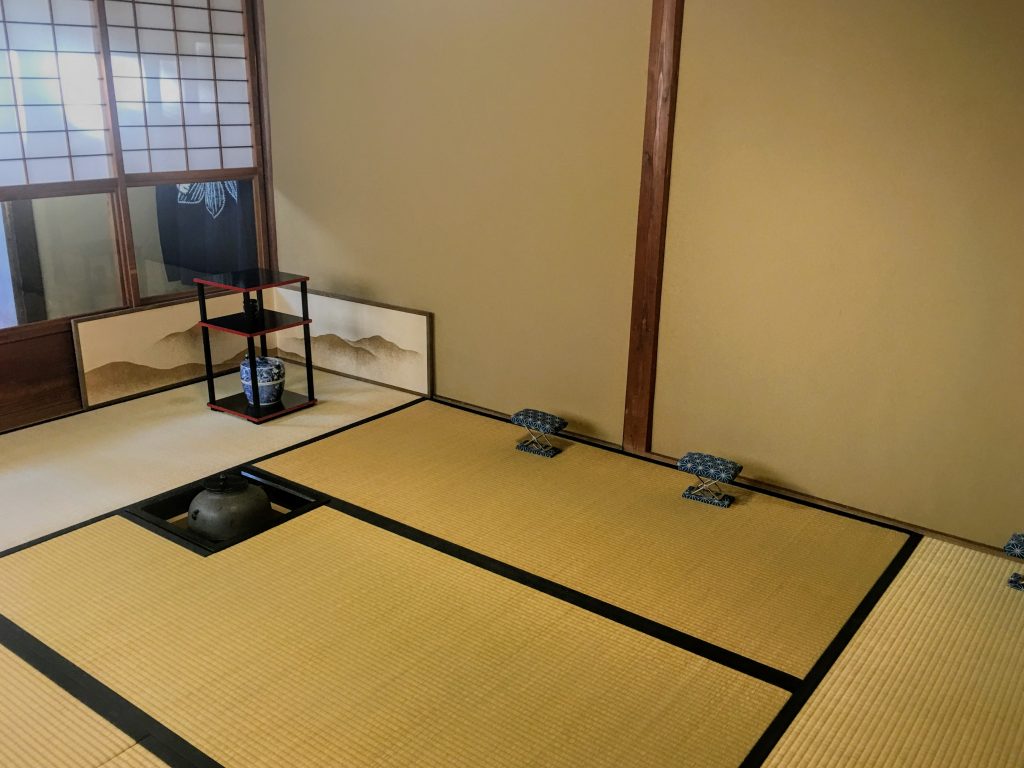
Stroll through Arashyama Bamboo Forest
Arashyama is a very beautiful autumn foliage viewing spot. Located in a mountainous region South of Kyoto with easy train access. The highlight is the Bamboo Forest. The one thing I disliked about the forest- it was too crowded. But if you go very early in the morning or during the Autumn illuminations, it’ll feel more serene for sure. Nevertheless, I liked Arashyama.
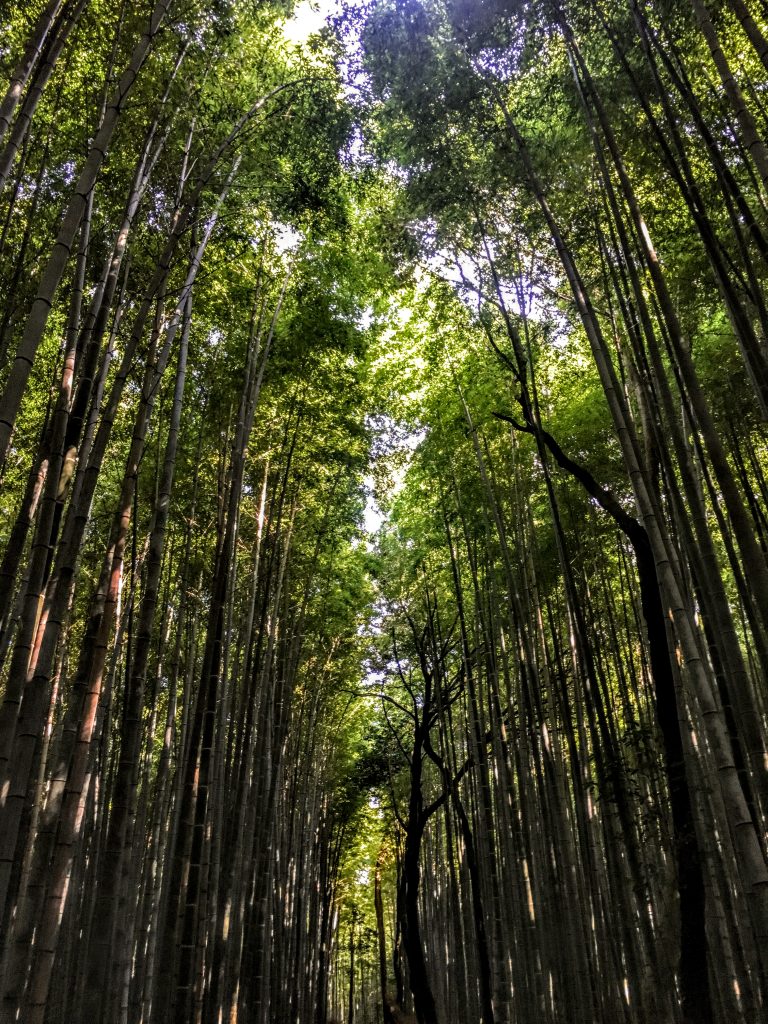
I like getting lost on the side paths and streets, walking near the river. And trying on a Yukata and taking pictures. We also had lunch in one very small place and ate simple but delicious ramen. For dessert, I ordered a teriyaki with chocolate. It was a chocolate pudding though, so I still preferred the red bean paste pancake. But I loved the fun shape though.
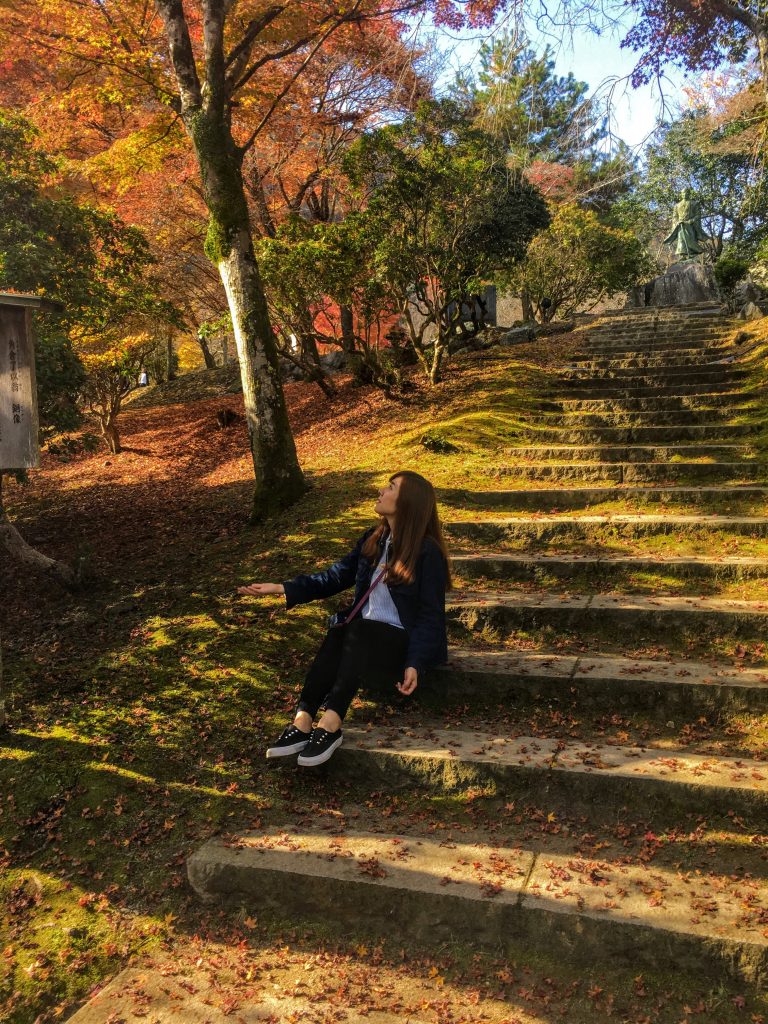
Go to Gion at Night
Gion is one of the most popular districts in Kyoto for a reason. It is one of the few remaining Geisha districts in Japan. Upscale restaurants, bars, and teahouses have mushroomed in the district and they attract a high-heeled clientele that can afford the services of these companion ladies.
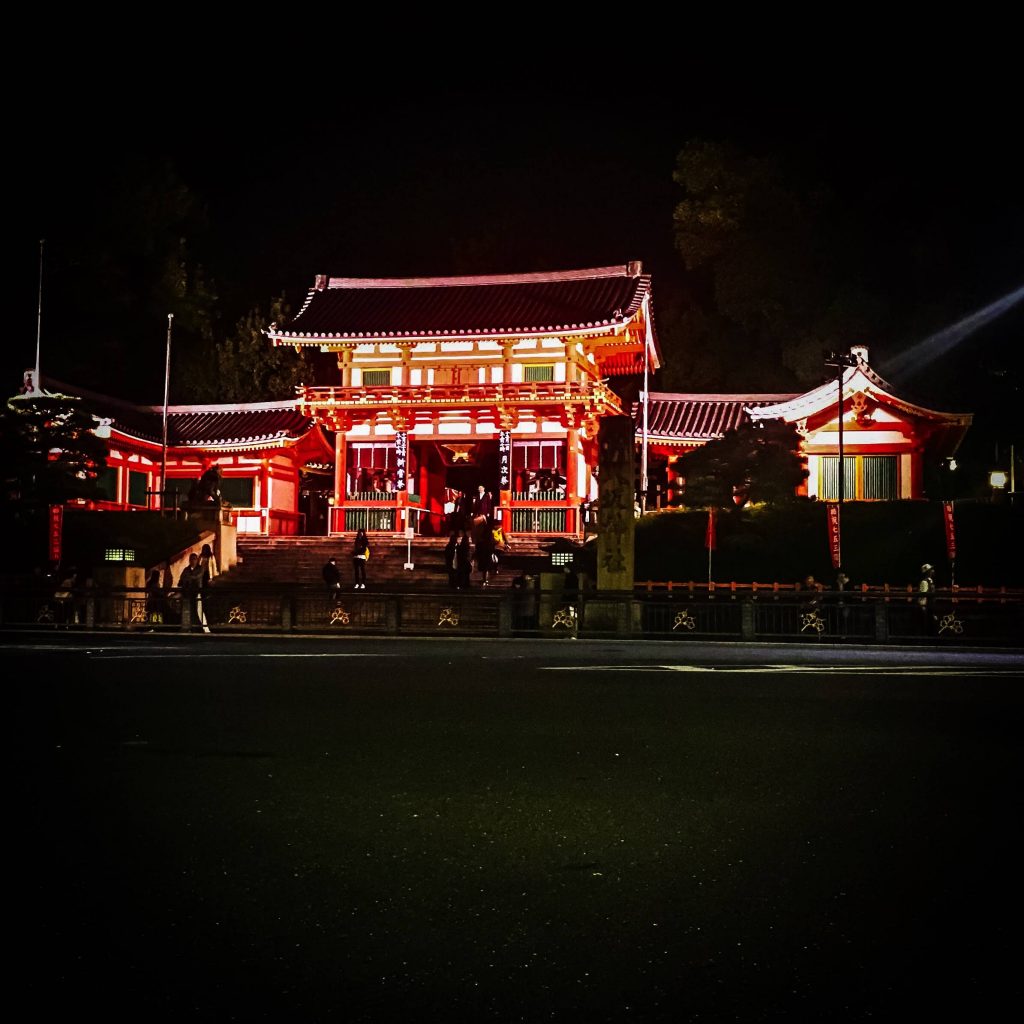
The presence of the Geishas also draws many tourists to Gion, most of them hoping to spot one of the Geishas rushing to her client. We were no exception to that.
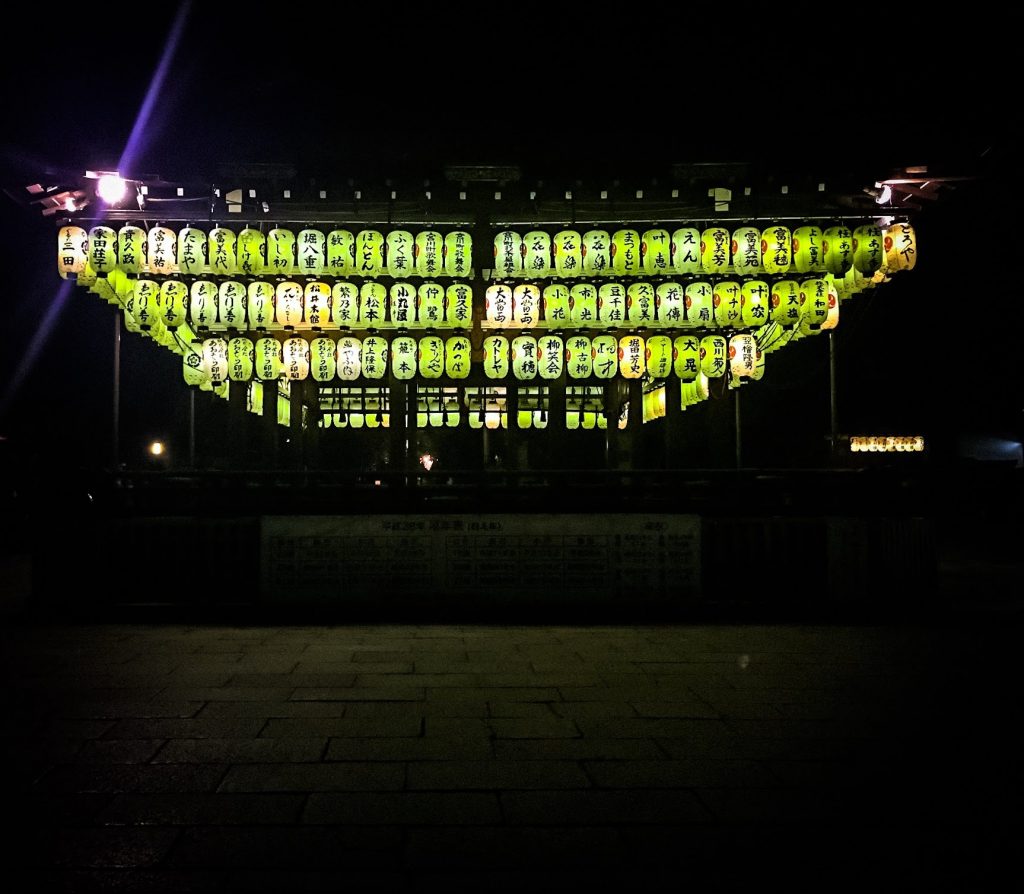
However, the Geishas are not the only thing that makes an evening walk in Gion worthwhile. Wandering through the maze of streets lined with authentic old Japanese building we almost felt like we were back in ancient Japan. The gorgeous cherry blossoms and impressive temples that we passed along the way made it even more charming. But still, the icing on the cake was the 3 Geishas that we met along the way.
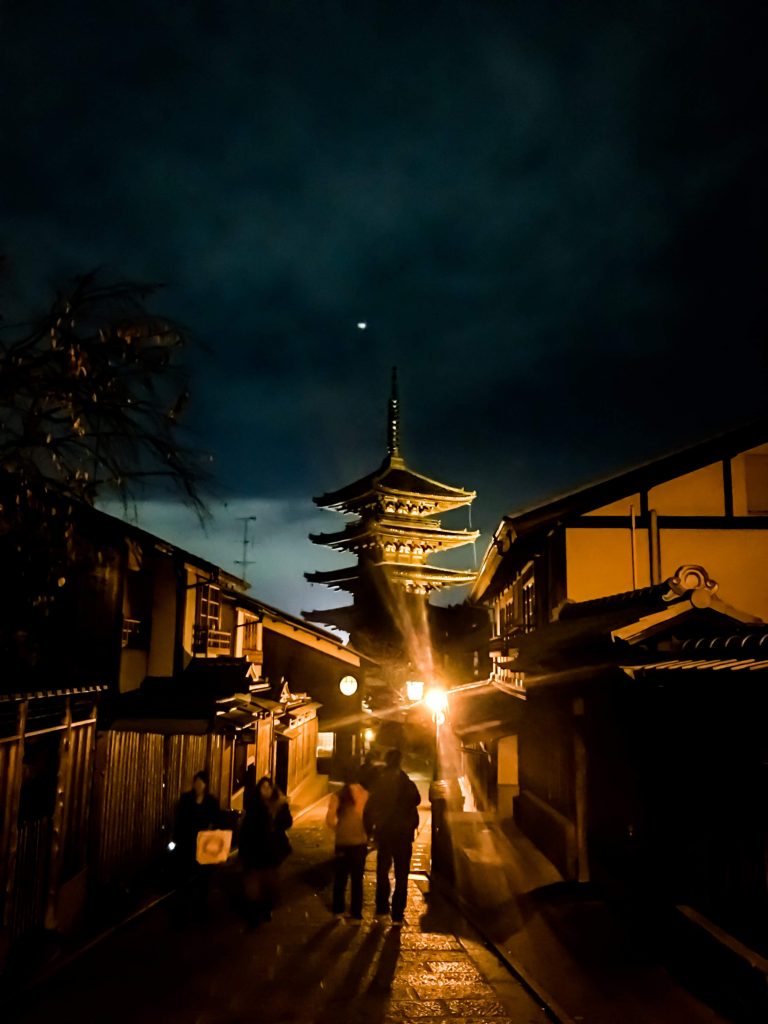
Stay in a Ryokan
As a first-time visitor to Kyoto, you should definitely stay in a ryokan, a traditional Japanese inn. However, it helps to know a few things in advance. This is not your typical hotel. The rooms are usually made of wood and bamboo with sliding paper walls separating them and grass tatami mats on the floor. You absolutely must never wear your shoes inside. You will sleep on a futon that is rolled out for you on the tatami mat floor in the evening and stowed away after you get up in the morning.
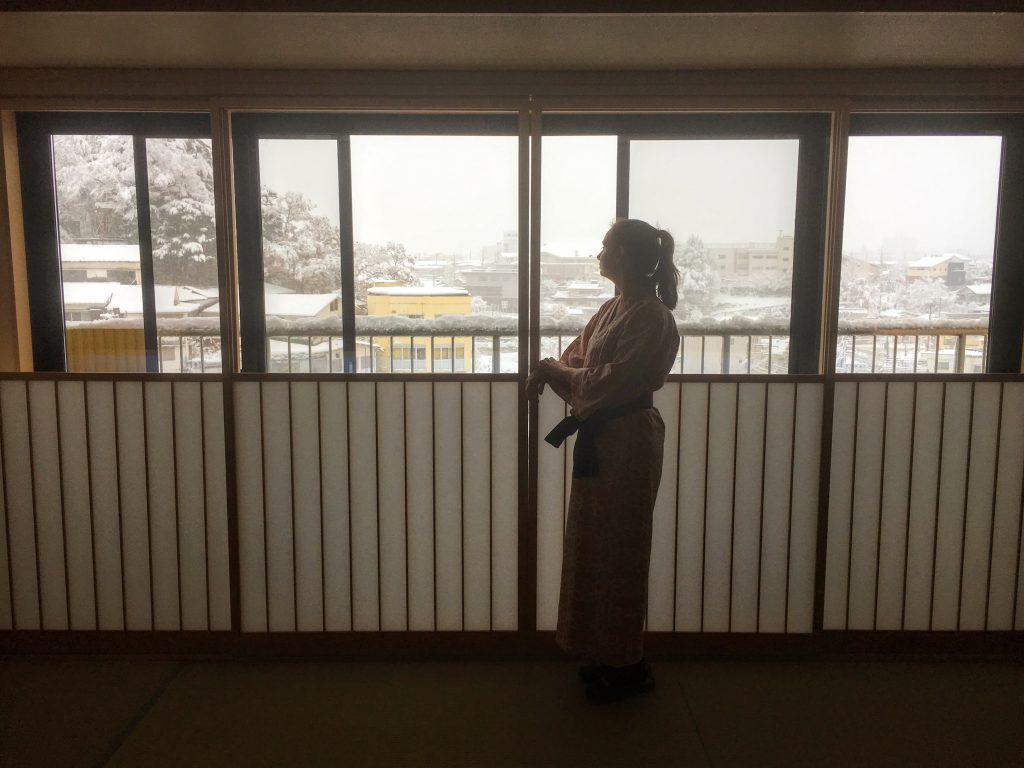
Breakfast and dinner are also served (at set times) in your room, on low tables brought in with the meal. You sit on thin cushions on the floor. Dinners can be very elaborate, with multiple tiny dishes. This is called kaiseki ryori and is a real treat. Breakfast usually includes rice and fish. Toilets may be either western style (a seat) or Japanese style (squat) – check when you book.
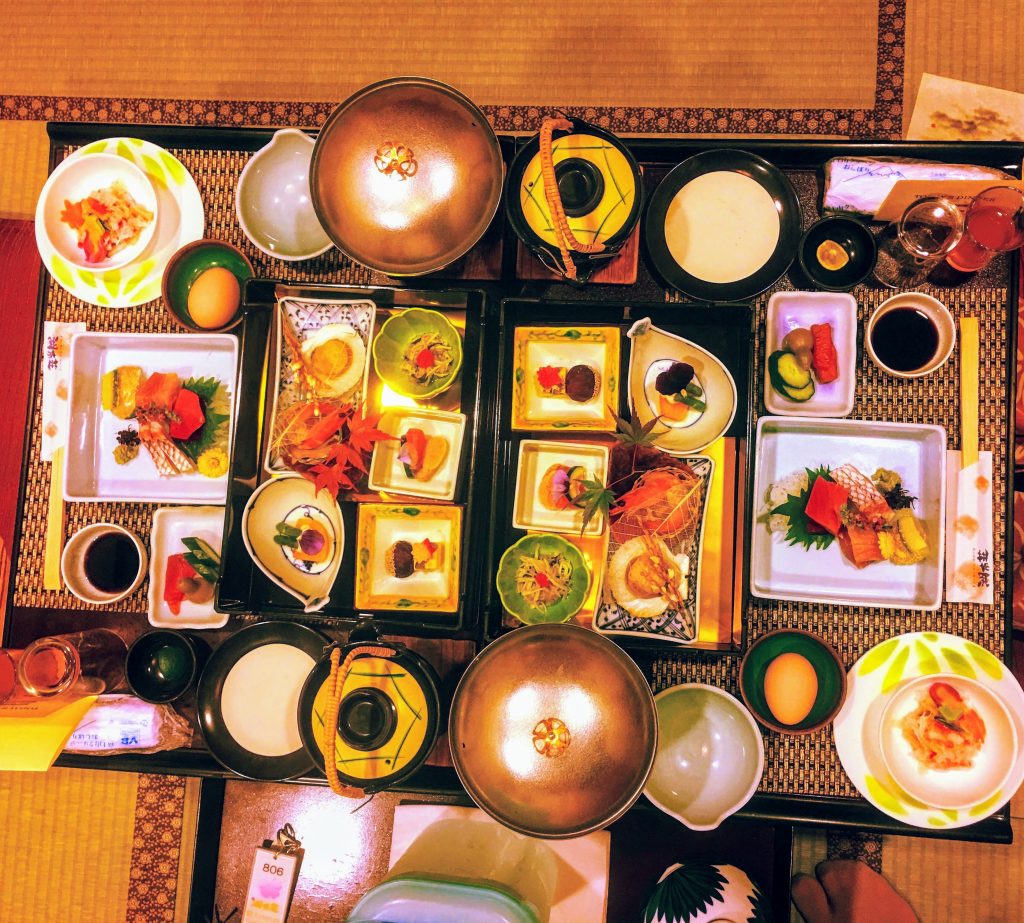
There will usually be plastic slippers just inside the toilet room. Wear these, so your feet stay clean. Many ryokans also have an onsen (hot springs) or at the very least a traditional Japanese bath. The baths are usually communal and men and women have different times. Soaking in hot water is a lovely way to relax after a day of sightseeing. You should always shower and be clean before you get in the bath.
Never wash in the bath or enter it dirty. It is shared water and the Japanese are very sensitive about cleanliness. More expensive rooms will have a private toilet and bath. You will usually be supplied with a yukata (a simple robe) to wear around the ryokan after your bath. If you embrace this is a very Japanese experience, you will love every moment of your ryokan stay.
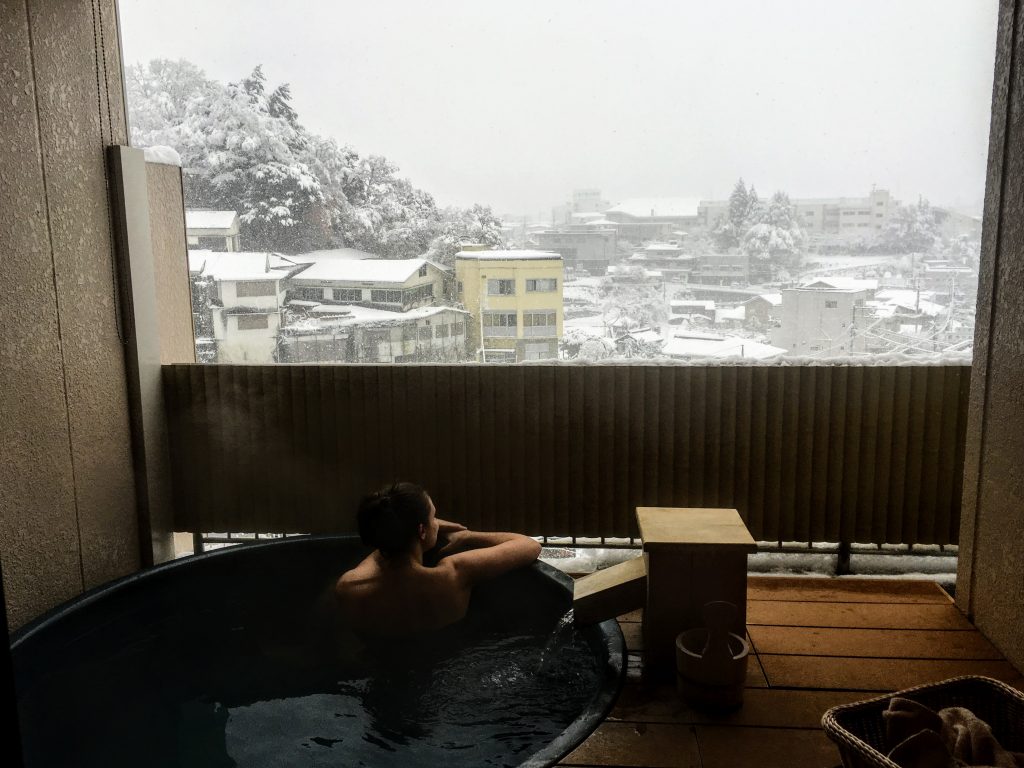
If you’re planning a trip to Japan and thinking of visiting Kyoto, don’t hesitate to contact me. I plan personalized trips from a first-hand experience for the discerning traveler.
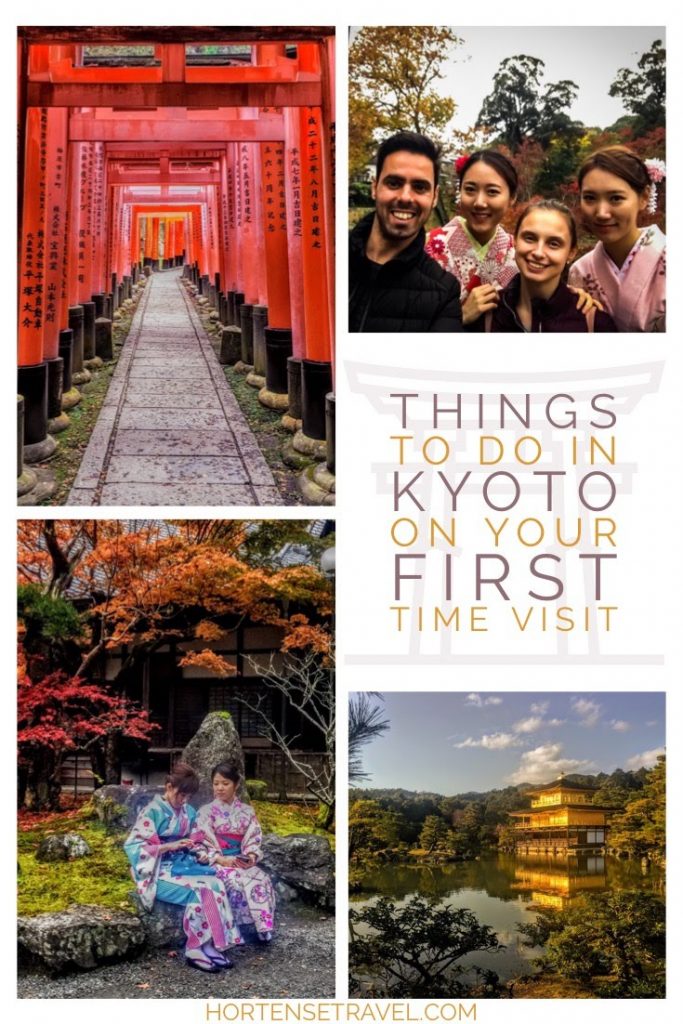
Co-authors:
Mariza from Hoponworld on the Silver Pavillion
Ben from Horizons Unknown on the Golden Pavillion
Sylvia from Wapiti Travel on Gion at Night
James from Travel Collecting on Staying in a Ryokan


